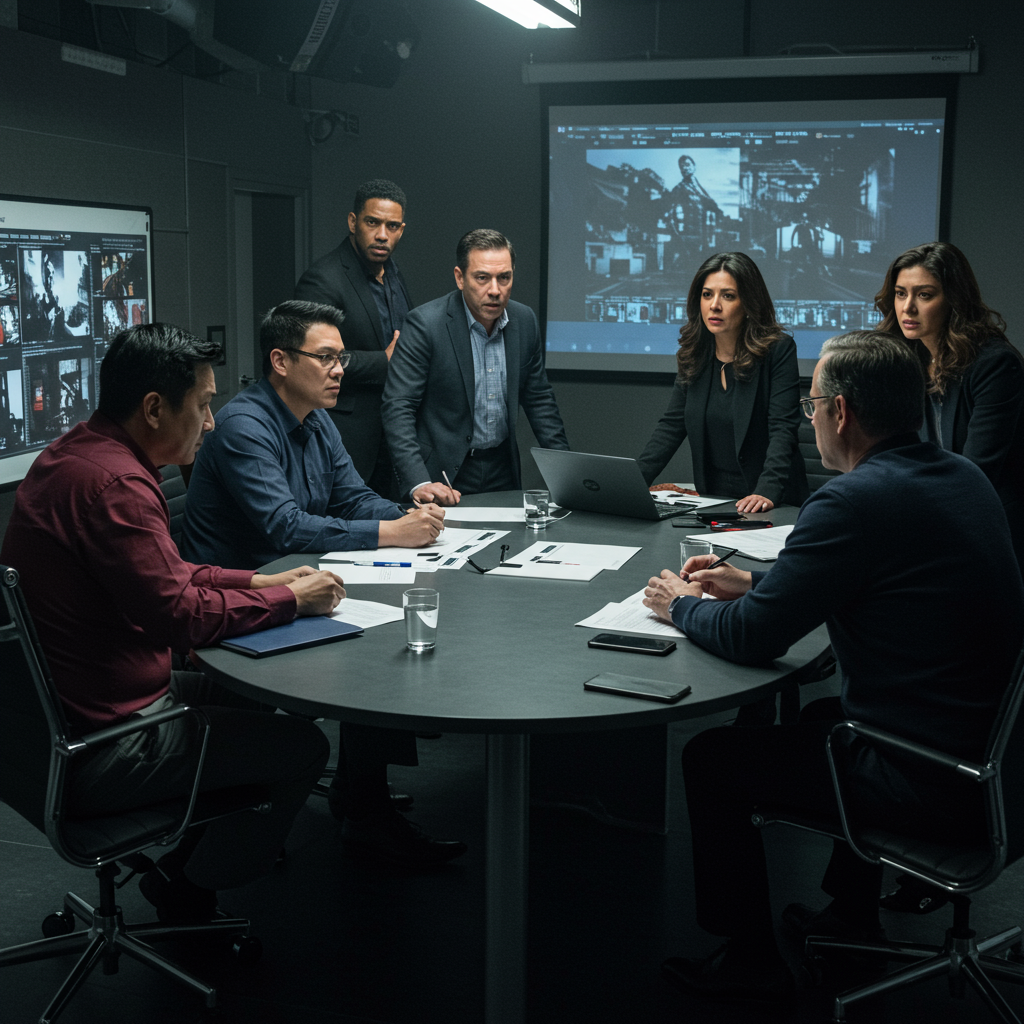Behind the scenes of blockbuster films, creative visions often collide with studio decisions. One prime example is the recent jurassic World Rebirth, where the planned conclusion underwent a significant shift. Despite initial agreement between the film’s director and one of its lead stars on a dramatic character fate, the final cut delivered to audiences told a different story entirely. This change wasn’t arbitrary; it involved multiple takes, internal debate, and ultimately, the powerful influence of audience reaction during test screenings. Understanding this process reveals much about how major studio movies are finalized.
The Director’s Initial Vision
When director Gareth edwards first read the script for Jurassic World Rebirth, one particular element stood out to him: the fate of Duncan Kincaid, the character set to be played by Oscar-winning actor Mahershala Ali. The original draft presented a compelling, definitive end for Kincaid in the film’s climactic moments. Edwards found this proposed ending impactful and moving, believing it served the narrative well. With this vision in mind, the team proceeded to pursue Mahershala Ali for the pivotal role, confident that the script’s direction, including Kincaid’s eventual demise, was solid.
An Unexpected Alliance: Director and Star Agree on Death
Securing an actor of Mahershala Ali’s caliber for Jurassic World Rebirth naturally sparked discussions within the production. Initially, there was a feeling that perhaps securing such a prominent star meant the character, Duncan Kincaid, should survive, leaving the door open for potential future appearances. However, Mahershala Ali himself received the script and had his own strong thoughts on Kincaid’s arc. Surprisingly, Ali’s primary note back to the filmmakers was a direct request: he wanted his character to die as originally written. Edwards found himself in complete agreement with Ali’s perspective. He recounts essentially joining forces with the actor, becoming “Team Mahershala,” and together they advocated for the original, more dramatic ending where Kincaid meets his end. This creative alignment between the director and the lead actor pushed the script back towards its initial, darker conclusion.
Studio Mandate: Film Both Endings
Despite the director and star being aligned on the death ending for Duncan Kincaid, the studio overseeing Jurassic World Rebirth introduced a crucial contingency. Universal Pictures requested that Gareth Edwards film not just one version of the ending, but two distinct alternatives. One version would depict Kincaid’s death as preferred by Edwards and Ali, and the other would show the character surviving the events of the film. This was a common practice for studios wanting options, but it set the stage for a potential divergence from the creative team’s preference.
Edwards proceeded to shoot both versions. When it came time to assemble his director’s cut, he naturally favored and submitted the version where Kincaid dies. However, upon viewing this cut, the studio executives weren’t fully convinced. They specifically asked to see the alternative ending, the one where Kincaid lives. While this survival version hadn’t been fully edited or refined yet, the team worked quickly to assemble it for the studio’s review. The reaction from the studio after seeing the survival cut was reportedly overwhelmingly positive. They felt strongly that this was the necessary ending for the film’s overall impact and audience reception.
Audience Testings Seal the Character’s Fate
With the studio now strongly favoring the survival ending, the next step was to gauge audience reaction. Two test screenings were arranged, both utilizing the version of Jurassic World Rebirth that featured Duncan Kincaid surviving. The results were striking. Edwards noted that the reaction from these test audiences was significantly more positive compared to expectations for the death ending. People seemed “a lot happier” with Kincaid making it out alive.
Edwards still held some personal reservations, feeling the death ending had a certain power. However, a specific screening in New York proved decisive. During the survival scene, a moment involving a flare revealed the character’s fate. This visual cue elicited a “massive applause” from the audience. This powerful, immediate emotional response convinced Edwards. He acknowledged that the audience reaction was a pivotal factor and ultimately agreed with the studio’s insistence on the alternative ending. Looking back, he expressed gratitude that the studio pushed for shooting that extra sequence, even suggesting that the survival scene became “probably the strongest part of the film” precisely because of the audience’s enthusiastic response to it.
What Happened in the Final Ending?
The ending of Jurassic World Rebirth that made it into theaters, the survival version, sees Zora’s team (including Duncan), paleontologist Henry, and the family they rescue attempting to escape Ile Saint-Hubert. After their initial helicopter plan is ruined by the genetically modified D-rex, they retreat into a tunnel system leading to a waiting boat. They are pursued by another mutated dinosaur, the Mutadon.
Reaching a locked gate blocking their path to the boat, Rueben’s young daughter Isabella courageously squeezes through bars to reach the control panel. While she works, the D-rex spots her. Isabella successfully opens the gate, allowing the group to escape onto the boat just in time to re-lock the gate, trapping the Mutadon. Meanwhile, the villainous pharmaceutical representative, Martin, tries to escape with valuable genetic samples. The D-rex attacks Martin, biting off his arm and causing the samples to fall, which Zora and Henry retrieve. As the group struggles to launch the boat, Duncan uses flares to distract the attacking D-rex, seemingly sacrificing himself. However, in the version shown, Zora and the others turn the boat around after seeing another flare signal from the water, rescuing Duncan, who has survived. This contrasts sharply with the original plan where he would have died during this sequence.
Box Office Success Amidst Debate
Interestingly, the debate over the ending happened behind the scenes of a film that performed surprisingly well commercially. Jurassic World Rebirth earned over $91.5 million on its opening weekend, contributing to a strong holiday total despite receiving mixed reviews from critics and having only middling word-of-mouth. The film’s reported production budget was also significantly lower than its predecessors, making its box office performance a clear success for Universal. While some critics noted that the main cast, including Mahershala Ali, Scarlett Johansson, and Jonathan Bailey, felt somewhat underutilized at times, the overall financial outcome suggests that the creative choices made, including the audience-tested ending, resonated positively enough to drive ticket sales. The film also included a resolution to an ethical question raised earlier about open-sourcing valuable genetic samples, a plot point retained from the script. The film does not feature a post-credits scene, which is typical for the franchise, and is described as a standalone story, though the survival of key characters leaves sequel possibilities open.
Frequently Asked Questions
What was the original planned ending for Jurassic World Rebirth?
The original script for Jurassic World Rebirth, as favored by director Gareth Edwards and actor Mahershala Ali, intended for Mahershala Ali’s character, Duncan Kincaid, to die during the film’s final sequence. This dramatic conclusion was initially seen as a powerful narrative choice for the character’s arc.
Why did Universal Pictures change the ending of Jurassic World Rebirth?
Universal Pictures changed the ending primarily based on audience test screening reactions. Although director Gareth Edwards and actor Mahershala Ali preferred the original ending where the character dies, the studio requested filming an alternative survival ending. Test audiences reacted significantly more positively to the version where the character survived, leading the studio and ultimately Edwards to choose that ending for the final release, believing it would be better received by viewers.
Did the ending change impact the film’s success or reception?
While it’s difficult to link the specific ending change directly to critical reception (which was mixed), the film performed very strongly at the box office. Test screenings indicated audiences were happier with the survival ending, suggesting this choice likely contributed positively to overall viewer satisfaction, which in turn supports commercial success. The film exceeded expectations financially, especially considering its lower budget compared to previous franchise installments.
Conclusion
The story of Jurassic World Rebirth‘s ending is a fascinating glimpse into the collaborative and often complex process of filmmaking. It highlights how the journey from script to screen involves numerous voices – the writer’s initial concept, the director’s vision, the actor’s interpretation, the studio’s strategic considerations, and perhaps most powerfully, the audience’s emotional response. In this case, while the creative team initially leaned towards a tragic fate for Mahershala Ali’s character, the preference for survival demonstrated by test audiences ultimately guided the final decision, resulting in the triumphant rescue depicted in the theatrical release. This proved to be a financially successful choice for Universal.
Word Count Check: ~1020 words


